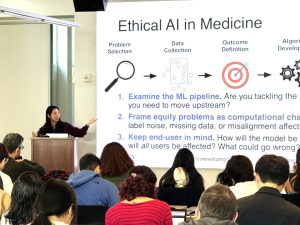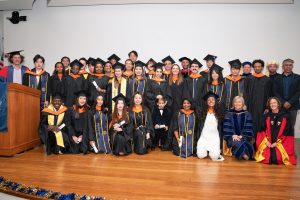By S. Shankar Sastry
Today, access to water, energy, health care, and financial services remain the greatest challenges to alleviation of extreme poverty, which affects nearly half the world’s population, more than 3 billion people. United Nations officials designed the 2000 Millennial Development Goals and the successor Sustainable Development Goals of 2015 to mobilize resources against the massive challenges. As such, the UN blueprints identify targets for progress in the four crucial areas of water, energy, health care, and wireless, along with the intertwining challenges of hunger, education, global warming, gender equity, environment, and social justice.
In many ways, the Millennial/Sustainable Development Goals are the most pressing problems of development. They are the challenges that must be of actionable focus for years to come. They are the wicked problems, as UC Berkeley Professor Horst Rittel coined them in 1973, “whose social complexity means that it has no determinable stopping point.”
Yet there are new and emerging technologies in our midst that are changing the 40-year dialogue about development interventions and disrupting the very idea of how intertwining problems can be “fixed.” These technologies are responsible for the many digital transformations that are revolutionizing the global economy. From banking and transportation to agriculture and health care, a multi-trillion information technology industry is in motion that is changing how human beings move, work, live, and think. This Information Age, this Third Industrial Revolution is leading over the next decade to an economic system in which more than 70 billion Internet of Things (IoT) sensors will be installed across all sectors to provide unprecedented volumes of data.
Of course, data is not water, energy, health care, or wireless communications access. Yet data can be inexpensively stored and processed, enabling the utilization of computer-intensive machine-learning algorithms that—if correctly directed—can bring down the cost of access to necessary goods and services. In addition, although artificial intelligence is still in its infancy, it is poised to make advances that will affect the development sector as much as the hospitality sector. Indeed, the trifecta of IoT, AI, and cloud computing offers a vision of digital transformation that will alter business models, services, and how every single person on the planet lives.
How might these digital transformations affect the poorest of the poor? How might they improve quality of life and access to goods and services? We at the Blum Center are focusing on how the next 10 years of digital transformation can be harnessed to provide new and sustainable solutions for extreme poverty alleviation. Here are some examples of digital transformations that we have invested in and tested to scale at the Center:
In Energy Access:
REPP Efforts to electrify rural communities in developing countries have been plagued by energy theft, unaffordable connection costs, intermittent supply, and poor maintenance. Despite ambitions of governments and donors to invest in rural electrification, decisions about how to extend electricity access to almost 1 billion people worldwide are being made in the absence of rigorous evidence. The Rural Electric Power Project (REPP) originally sought to address this problem by incorporating new technology, such as village-scale clean energy microgrids, as well as sustainable financing and distribution mechanisms to better serve the rural poor. REPP has been utilizing novel data collection and analysis tools to inform the redesign and refinement of the technology and rigorously measure impacts in the field. Researchers from the Technology and Infrastructure for Emerging Regions (TIER) group, the Center for Effective Global Action (CEGA), and the Energy Institute at the UC Berkeley Haas School of Business have been working with local government and industry partners to generate real-time user data (using “smart” meters) and to collect comprehensive household survey data before and after electricity deployment. Currently, in a partnership with Kenya’s Rural Electrification Authority, the researchers are studying the demand for and impacts of electrification in a large-scale, randomized controlled trial. By offering subsidies of varying amounts to “under grid” households—those located in close proximity to the national grid—the team is measuring people’s willingness to pay for power, and tracking what happens after they connect.
In Health Care Access:
CellScope. In developing regions, where health care infrastructure is limited, there is an urgent need for greater access to reliable diagnostic testing, particularly for infectious diseases. The objective of CellScope, invented by Blum Center Chief Technologist and Bioengineering Professor Dan Fletcher and his lab members, is to establish mobile digital microscopy as a platform for disease diagnosis that can be used by non-expert health workers to in remote settings. The mobile phone-based, easy-to-use platform can rapidly capture images blood, sputum, or other patient samples and wirelessly transmit the data to clinical centers, allowing the patient to be evaluated and treated at the point of care thanks to algorithms running on the phones, with data uploaded wirelessly (when connectivity is available) for epidemiological purposes and quality control monitoring. By using existing communication technology and infrastructure, CellScope moves a major step forward in affordably and innovatively taking clinical microscopy out of specialized laboratories and into field settings for disease screening, diagnoses, and treatment.
In Wireless Access:
Community Cellular Network. Today over one billion people worldwide live beyond the reach of cellular networks. Many live in sparsely populated rural regions, with weak power infrastructure—making it prohibitively expensive for most telecommunication companies to invest. Living outside the network means lack of access to important services like emergency communications, market price information, and job opportunities. To address this challenge, Computer Science Professor Eric Brewer and his lab members, developed the Community Cellular Network (CCN). The CCN is a complete “network in a box,” enabling remote communities to both own and operate their own cellular systems. Designed to be deployed by people with limited technical skills, CNN, which became Endaga under the leadership of Kurt Heimerl, costs less than one tenth the price of traditional cellular equipment, runs solely on solar or micro-hydro power, uses less than 50W average power draw, and can provide kilometers of coverage to rural communities. In 2015, Endaga joined forces with Facebook to scale Internet access to rural communities.
Many who follow these transformations in development are concerned about digital ethics, privacy, and fairness. We need to understand how AI (primarily machine learning and cloud computing) is being used to understand poverty and economic development in urbanization, population density, traffic demand, housing, crop yields, and food security, among other topics.
Questions of particular relevance to development include: Is it fair to be denied a program because the people you talk to on your cell phone make you look less creditworthy or less in need of a service? What rights do people have to privacy in an environment where satellites are photographing their homes, phones are tracking their locations and communications, and their moods are being analyzed on social media? And how much access to this type of data should development researchers have?
The fact is (per the economic concept of competitive equilibrium) if you give up more of your data, you may get lower prices. At the same time (per the Nash theory in economics) decisions about giving up data for individuals can sometimes be terrible for groups, causing users who have high privacy settings to “free-ride” at the expense of those with low privacy settings. Thus, if we want to optimize the utility of the common good around data sharing and AI in development, we may well need to institute societal side payments—means to induce recipients to take part in the transaction that are legitimate and corruption-free, and redress underinvestment in the common good.
This will take as much analysis, debate, and social justice action in development as in every other aspect of digital transformations. It is one of the Blum Center’s stakes in the ground for the 2018-2018 academic year and the years ahead at UC Berkeley.
Shankar Sastry is the Faculty Director of the Blum Center for Developing Economies. He is a Professor of Electrical Engineering and Computer Sciences, Bioengineering, and Mechanical Engineering.





